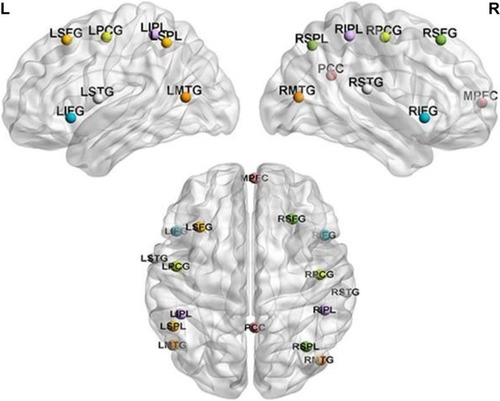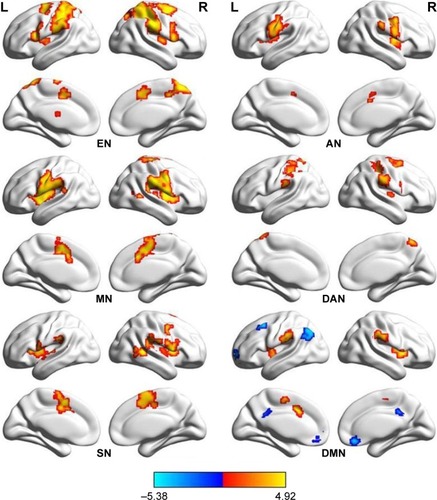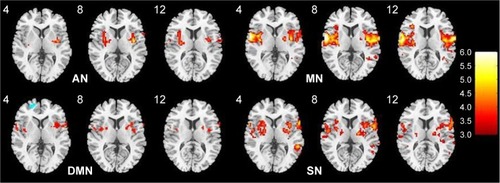Figures & data
Table 1 Components and regions of interests defined by the spatial ICA analysis
Figure 1 The distribution diagram of regions of interesting which stand for eight resting-state networks.
Abbreviations: L, left; R, right; PCC, posterior cingulate gyrus; MPFC, medial prefrontal gyrus; SFG, superior frontal gyrus; SPL, superior parietal lobule; IFG, inferior frontal gyrus; IPL, inferior parietal lobule; STG, superior temporal gyrus; PCG, precentral gyrus; MTG, middle temporal gyrus.

Table 2 The PPI results of the patient group for each network
Figure 2 The modulatory effectives of those eight RSNs after cluster-level false discovery rate corrected.
Abbreviations: PCC, posterior cingulate gyrus; MPFC, medial prefrontal gyrus; R, right; L, left; AN, auditory network; DAN, dorsal attention network; MN, motor network; LEN, left executive network; REN, right executive network; SN, salience network; EN, extrastriate network.

Figure 3 The positive modulatory effects are showed in warm color, and this diagram exhibits the insular gyrus effect of AN, MN, DMN, SN in a transverse view.
Abbreviations: MNI, Montreal Neurological Institute; FDN, false discovery rate; AN, auditory network; MN, motor network; DMN, default mode network; SN, salience network.

